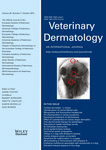Journal list menu
Export Citations
Download PDFs
Abstracts
Abstracts of the 28th Annual Congress of the ECVD-ESVD, 24–26 September 2015, Krakow, Poland
- Pages: 297-313
- First Published: 03 September 2015
Review
Contact dermatitis: a comparative and translational review of the literature
- Pages: 314-e67
- First Published: 16 July 2015
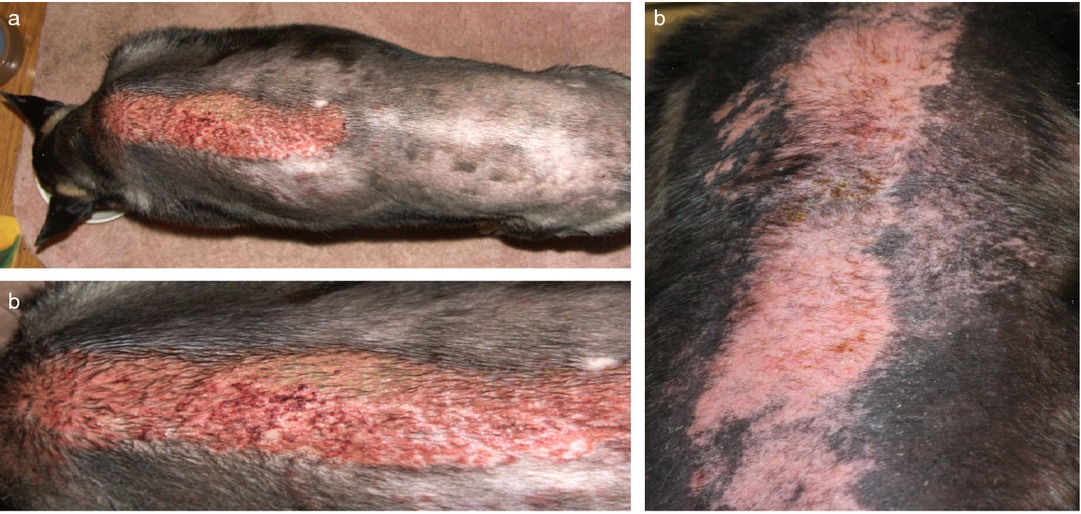
Background – Contact dermatitis (CD) is an inflammatory skin condition induced by direct contact with a specific chemical. Irritant CD (ICD) is a nonspecific inflammatory cutaneous reaction to an irritating agent. Allergic CD (ACD) is an immune-mediated antigen-specific skin reaction to an allergenic chemical. Objectives and methods – The biomedical literature (human, basic science, veterinary) was reviewed to evaluate the current state of knowledge regarding CD. Conclusion and clinical relevance – CD is a relatively common occupational skin disease in human beings, but the prevalence in veterinary medicine is undefined. It can lead to debilitating clinical signs. Further research in human medicine and even more so in veterinary patients, will be required in order to allow for an evidence-based approach in its diagnosis and management
Scientific Papers
Structure and function of the skin
Ultrastructural characterization of normal Merkel cells in the dog
- Pages: 328-e69
- First Published: 14 July 2015
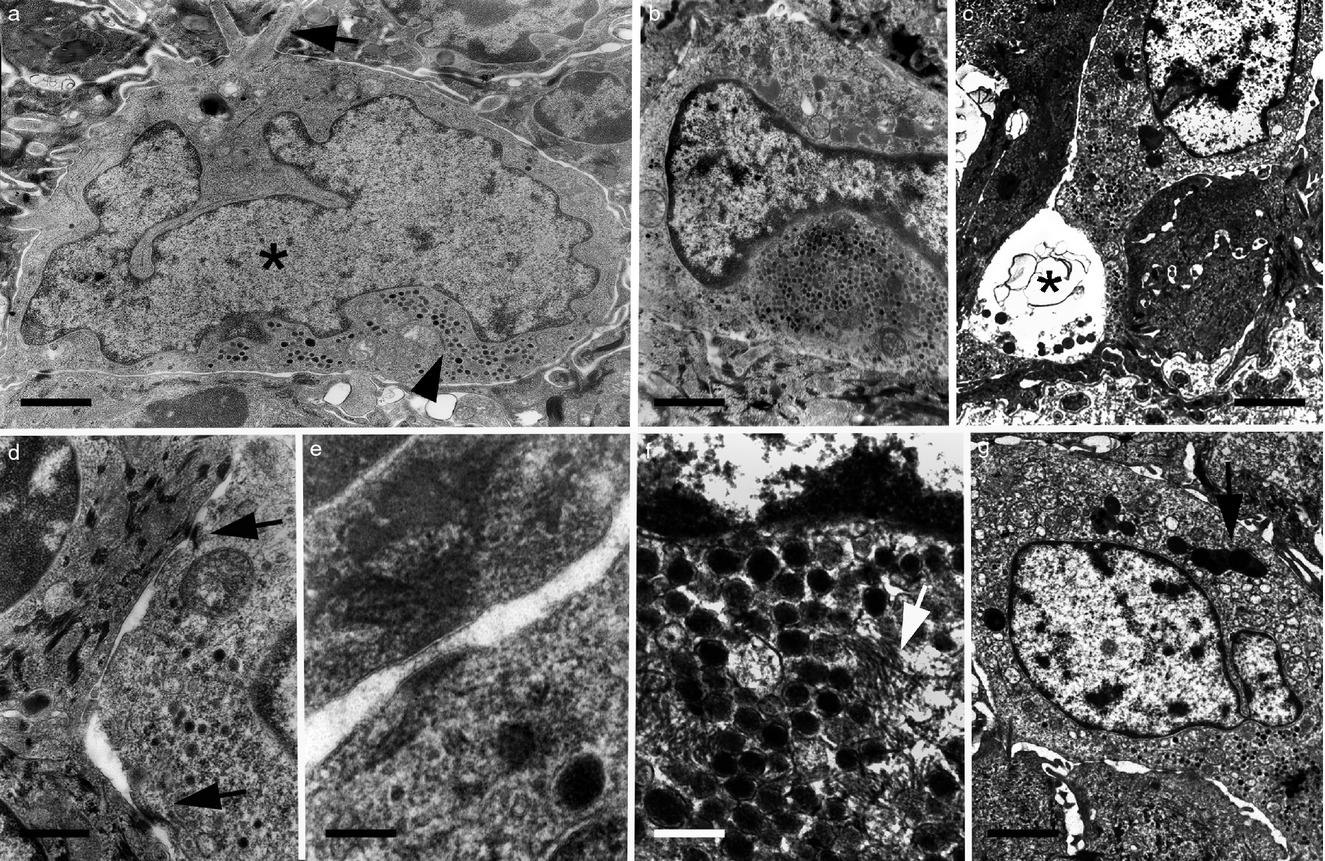
Background – Involvement of Merkel cells (MKs) in different cutaneous diseases as well as in the growth, differentiation and homeostasis of the skin has been previously documented. Hypothesis/Objectives – To assess the ultrastructural features of MKs in the dog skin, including morphometrics, highlighting their similarities and differences with those described for other mammals. Conclusions and clinical importance – The present study represents the first complete description of the ultrastructural characteristics of MKs in the dog, enhancing the knowledge of the skin structure in this species and representing a basic background for future physiological and pathological studies of the role of these cells in normal and damaged canine tissues.
Bacterial skin diseases
Evaluation of canine-specific minocycline and doxycycline susceptibility breakpoints for meticillin-resistant Staphylococcus pseudintermedius isolates from dogs
- Pages: 334-e71
- First Published: 28 July 2015

Background – Using the US Clinical and Laboratory Standards Institute (CLSI) human tetracycline breakpoints to predict minocycline and doxycycline susceptibility of Staphylococcus pseudintermedius (SP) isolates from dogs is not appropriate because they do not meet pharmacokinetic/pharmacodynamic data using a standard dose. New breakpoints have been approved for doxycycline and proposed for minocycline. Revised breakpoints are four dilutions lower than tetracycline breakpoints, providing a more conservative standard for classification of isolates. Hypothesis/Objectives – The objectives of this study were to measure minimum inhibitory concentrations (MICs) of minocycline and doxycycline of 100 canine meticillin-resistant SP clinical isolates, compare their susceptibilities to minocycline and doxycycline based on current and revised standards, and document their tetracycline resistance genes. Conclusions and clinical importance – Use of the human tetracycline breakpoints misclassified 45 and five of the isolates as susceptible to minocycline and doxycycline, respectively. PCR analysis revealed that 43 and five of the isolates classified as susceptible to minocycline and doxycycline, respectively, possessed the tetracycline resistance gene, tet(M), known to confer resistance to both drugs. These results underscore the importance of utilizing the proposed minocycline and approved doxycycline canine breakpoints in place of human tetracycline breakpoints.
Effectiveness of a combined (4% chlorhexidine digluconate shampoo and solution) protocol in MRS and non-MRS canine superficial pyoderma: a randomized, blinded, antibiotic-controlled study
- Pages: 339-e72
- First Published: 03 July 2015

Background -There is a lack of studies comparing topical antiseptics to systemic antibiotics in the treatment of canine superficial pyoderma. Hypothesis/Objectives - To compare the efficacy of topical chlorhexidine with systemic amoxicillin–clavulanic acid for treatment of canine superficial pyoderma. Conclusion and clinical importance - Topical therapy with chlorhexidine digluconate products may be as effective as systemic therapy with amoxicillin–clavulanic acid. This finding supports the current recommendations to use topical antiseptics alone for management of superficial pyoderma.
Parasitic skin disease
Treatment of canine generalized demodicosis using weekly injections of doramectin: 232 cases in the USA (2002–2012)
- Pages: 345-e73
- First Published: 20 July 2015
Background – Generalized demodicosis is a severe skin disease in the dog, with limited treatment options. Hypothesis/Objectives – To demonstrate that doramectin, when given at a dose rate of 0.6 mg/kg body weight, is a safe and effective treatment for generalized demodicosis in the dog. Conclusion and clinical importance – Doramectin given at a dose rate of 0.6 mg/kg body weight by subcutaneous injection at weekly intervals is a useful and well-tolerated treatment for generalized demodicosis in the dog.
Hypersensitivity disorders
Complementary effect of oral administration of Lactobacillus paracasei K71 on canine atopic dermatitis
- Pages: 350-e75
- First Published: 30 June 2015
Background – Atopic dermatitis is a common skin disease encountered in dogs. Glucocorticoids are commonly recommended for symptomatic therapy, and well-tolerated adjunctive therapies may help to reduce the necessary dose and associated risks of chronic glucocorticoid use. Hypothesis/Objectives – The purpose of this study was to evaluate the complementary efficacy of oral administration of Lactobacillus paracasei K71 in canine atopic dermatitis (cAD). Conclusion and clinical importance – Oral administration of K71 can be useful in dogs with cAD as a complementary therapy, by providing a steroid-sparing effect.
Autoimmune and immune-mediated dermatoses
Oral glucocorticoid pulse therapy for induction of treatment of canine pemphigus foliaceus – a comparative study
- Pages: 354-e77
- First Published: 06 August 2015

Background — The management of canine pemphigus foliaceus (PF) often requires long-term immunosuppressive treatment that is often associated with unacceptable adverse effects. High-dose glucocorticoid pulse therapy, an alternative treatment used for pemphigus in people, has been shown to provide rapid improvement in dogs with pemphigus foliaceus and vulgaris. Objectives — To further identify the benefit of pulse therapy for management of canine PF, we compared the outcomes of oral glucocorticoid pulse therapy and traditional therapy during the first 3 months of disease. Conclusions and clinical importance — These results suggest several benefits associated with oral glucocorticoid pulse therapy, such as a higher proportion of dogs achieving CR during the first 3 months, a lower average maximal oral glucocorticoid dosage given between pulses and minimal adverse drug events.management.
A preliminary survey of the histopathological features of skin from the planum nasale and adjacent skin of dogs unaffected by dermatological or respiratory disease
- Pages: 359-e79
- First Published: 20 July 2015
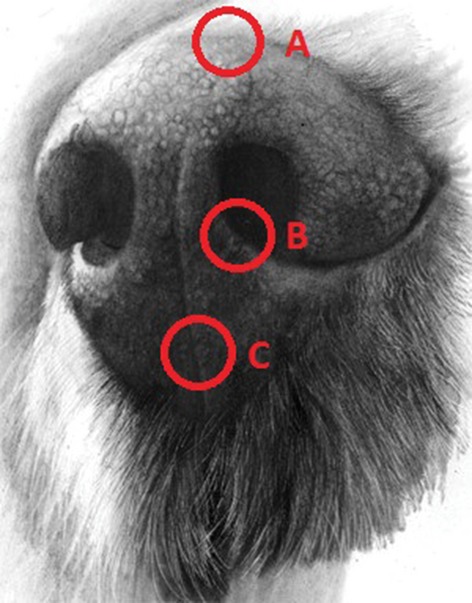
Background – There is a general belief that immune system cells are present in larger numbers in the planum nasale and adjacent haired skin in the dog. However, little published information about the normal histological appearance of the skin of this area exists. Hypothesis/Objectives – The aim was to obtain information about the normal histological appearance of canine skin for specific anatomical regions of the planum nasale and the haired skin adjacent to the planum nasale. Conclusions – Inflammatory change noted in diagnostic biopsies from this area from dogs with clinical disease is likely to be of pathological significance. However, pigmentary incontinence appears to be common at this site in clinically normal dogs without significant inflammatory cell infiltration and is therefore not necessarily of pathological significance when seen in isolation in this location.
Miscellaneous alopecias
Identification of 5α-reductase isoenzymes in canine skin
- Pages: 363-e81
- First Published: 14 July 2015
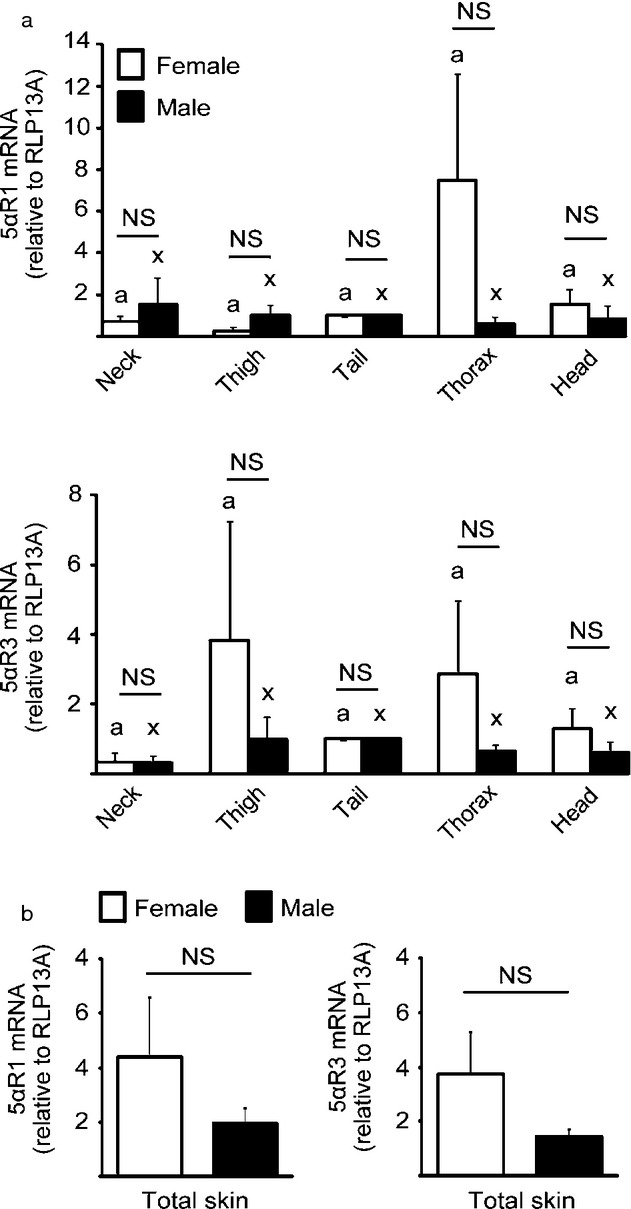
Background – Alopecia X in dogs is a noninflammatory alopecia that may be caused by a hormonal dysfunction. It may be similar to androgenic alopecia in men that is caused by the effect of dihydrotestosterone (DHT). The 5areductase isoenzymes, 5aR1 and 5aR2, and a recently described 5aR3, are responsible for the conversion of testosterone into DHT. However, which 5a-reductases are present in canine skin has not yet been described. Objectives – The main objective of this study was to determine the pattern of expression of 5a-reductase genes in canine skin. Conclusions and clinical importance – To the best of the authors' knowledge, this is the first study demonstrating the expression of 5a-reductases in canine skin and the expression of 5aR3 in this tissue. These results may help to elucidate the pathogenesis of alopecia X and to determine more appropriate treatments for this disorder.
Generalized severe junctional epidermolysis bullosa with congenital absence of skin in churra lambs
- Pages: 367-e83
- First Published: 10 June 2015
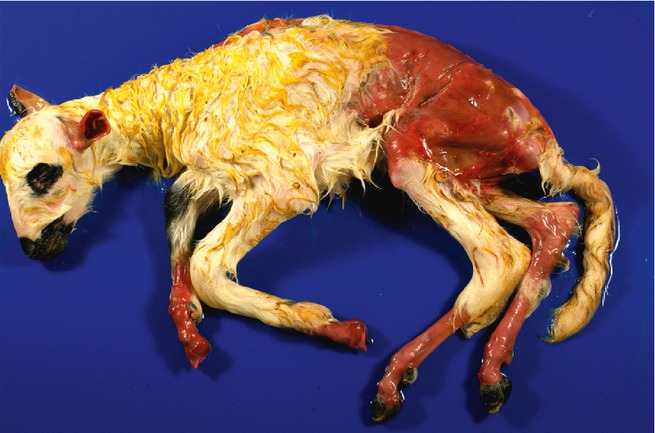
Background – Up to 0.5% of churra lambs from two genetically related flocks showed congenital skin lesions of variable severity, jeopardizing the life of the lambs in the most severe cases. Hypothesis/Objectives – The primary objective of this study was to classify the type of congenital epithelial disease suffered by these animals, based on the description of the macroscopic skin defects, the histological and ultrastructural changes, and the hereditary nature of the condition. Conclusion and clinical importance – The pathological findings and mode of inheritance in these lambs are similar to an inherited epidermolysis bullosa subtype of humans, which has not been reported previously in veterinary medicine.
Brief Communication
Sweat osmolarity shows intra-animal regional variation in the horse
- Pages: 374-e85
- First Published: 30 June 2015
Background – Sweating is important in regulating body temperature but can be a source of loss of both fluids and electrolytes. Although the process has been studied in horses, the variation in sweat osmolarity across the body has not. Hypothesis/Objectives – This work describes an investigation to determine if there is regional variation in the osmolarity of sweat across different anatomical regions of the horse. Conclusion and clinical importance – Previous studies have used osmolarity values based on the sweat collected from the horse's back. The current work demonstrates that these values are probably an underestimation of electrolyte loss, which may have implications for the composition and administration of rehydration compounds.
Case Reports
Generalized vitiligo in a dog with primary hypoadrenocorticism
- Pages: 376-e86
- First Published: 23 June 2015
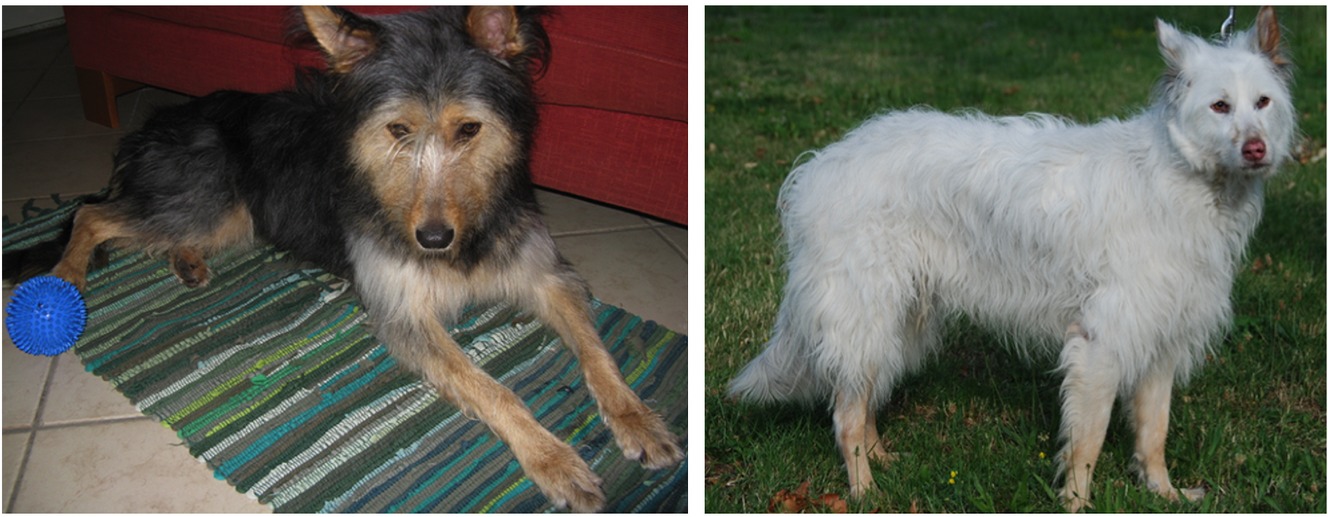
Background – Vitiligo is presumed to be an autoimmune disorder in the dog; primary adrenal insufficiency (Addison's disease) is associated with immune-mediated destruction of the adrenal cortex. Hypothesis/Objectives – In this case report, we describe a dog with primary hypoadrenocorticism that developed generalized vitiligo. Conclusions and clinical importance – Dogs with immune-mediated disease may develop other manifestations of immune immune-mediated disease, including a combination of Addisons disease and vitiligo. The cause in this case was not determined.
Alopecia areata universalis in a dog
- Pages: 379-e87
- First Published: 30 June 2015
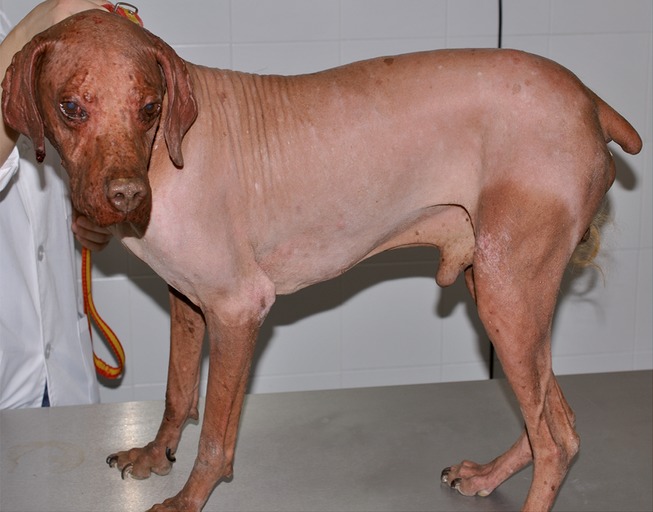
Background – Alopecia areata is a T-cell mediated autoimmune disease that occurs in humans and various other mammalian species. When the disease progresses to total alopecia it is defined as alopecia areata universalis (AAU), although this outcome has only been described in humans. Hypothesis/objectives – To describe a case of canine alopecia areata universalis and its clinical outcome after 22 months of follow-up. Conclusions and clinical importance – To the best of the author's knowledge, this is the first documented case of canine AAU. The clinical and histopathological features were consistent with a diagnosis of AAU as defined in humans. Treatment with oral ciclosporin resulted in near complete resolution of the alopecia, but after 5 months without treatment the alopecia did not relapse and spontaneous resolution cannot be ruled out.
Congenital subcutaneous arteriovenous malformation in a puppy: diagnosis with CT angiography
- Pages: 384-386
- First Published: 14 July 2015
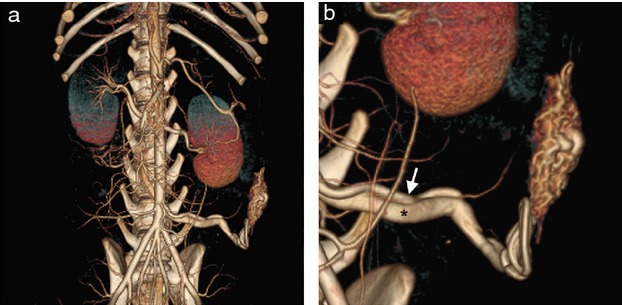
A 4-month-old, 20 kg, intact male, cane corso dog was presented with a slowly growing subcutaneous lesion on the left caudoventral abdominal wall. Ultrasound and computed tomography angiography revealed a subcutaneous plexus of aberrant tortuous vessels directly connected with the superficial branch of the deep circumflex iliac artery and vein. The arteriovenous malformation (AVM) was successfully surgically removed. Early recognition and surgical removal of AVM can have excellent cosmetic results and prevents potential cardiovascular complications.
Microneedling as a successful treatment for alopecia X in two Pomeranian siblings
- Pages: 387-e88
- First Published: 14 July 2015
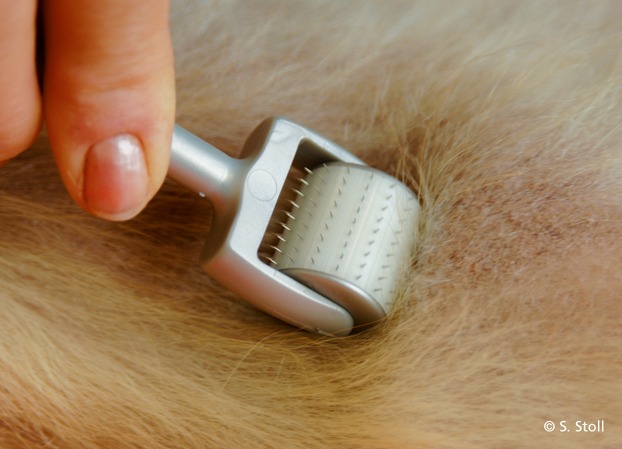
Background – Alopecia X (hair cycle arrest) is a relatively frequent hair growth disorder in Pomeranians and several other breeds, characterized by symmetrical, noninflammatory alopecia without systemic signs. The cause and pathogenesis remain unknown. Previously reported treatments with various topical and systemic drugs have been variably successful. Hypothesis – We hypothesized that superficial mechanical skin trauma applied with a microneedling device would induce long-term hair regrowth at treated sites. Conclusions and clinical importance – This is the first report of microneedling to induce hair regrowth in dogs affected by alopecia X. Long-term studies with microneedling in a larger number of dogs with alopecia X will need to be performed to confirm these preliminary results and to further evaluate if hair-regrowth is permanent.
Erythema multiforme associated with zonisamide in a dog
- Pages: 391-e89
- First Published: 20 July 2015

This report describes a dog that developed erythema multiforme in temporal association with administration of the sulphonamide-based anticonvulsant drug zonisamide. Similar adverse drug reactions have been associated with sulphonamide antimicrobial drugs. Caution should be exercised when prescribing this medication for dogs with known hypersensitivity to sulphonamides.
Estradiol-induced alopecia in five dogs after contact with a transdermal gel used for the treatment of postmenopausal symptoms in women
- Pages: 393-e91
- First Published: 28 July 2015
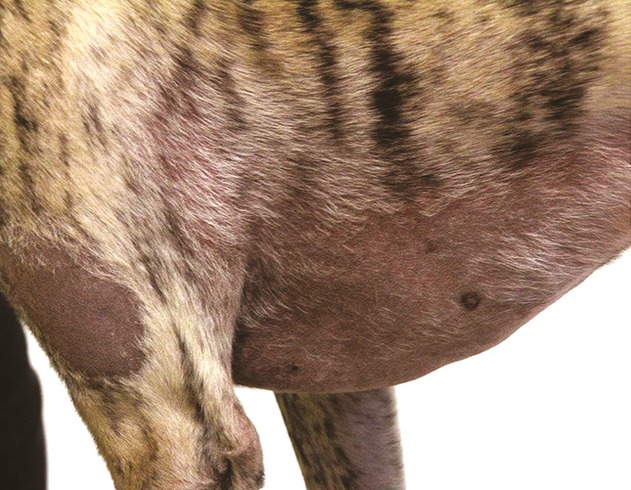
Background — Noninflammatory alopecia is a frequent problem in dogs. Estrogen-induced alopecia is well described in dogs, with estrogen producing testicular tumors and canine female hyperestrogenism. Objectives — To increase awareness that extensive alopecia in dogs can be caused by exposure to estradiol gel used by owners to treat their postmenopausal symptoms. Conclusion and clinical importance — Alopecia can occur after contact with a transdermal gel used as treatment for postmenopausal symptoms in women. Estradiol gel used by female owners therefore represents a possible cause for noninflammatory alopecia in dogs. Estradiol concentrations are not necessarily elevated in affected dogs.
Book Review
Otitis Externa: An Essential Guide to Diagnosis and Treatment
- Page: 397
- First Published: 23 June 2015




